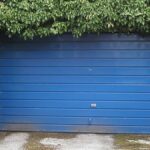A plungie pool, also known as a plunge pool, is a small, shallow pool designed for plunging, wading, or sitting in to cool off on hot days. Plungie pools have become increasingly popular additions to backyards and outdoor living spaces in recent years. But before taking the plunge on purchasing your own plungie pool, it’s important to understand what exactly these pint-sized oases entail.
We’ll cover everything you need to know about plungie pool cost. Armed with the right information, you’ll be able to determine if a plungie pool is the right choice for your yard and budget. So let’s dive right in!
What is a Plungie Pool?
A plungie pool is a small, above-ground plunge pool, typically ranging from 6 to 10 feet in diameter and 2 to 4 feet deep. While too tiny for swimming laps, these petite pools are ideal for cooling off with a refreshing dip. The compact size also makes them a practical and affordable backyard upgrade.
Plungie pools cater to adults and older children rather than young kids and toddlers. They work well placed near a patio or deck, allowing easy access for plunging in and lounging poolside. Most plungie pools don’t have elaborate water features, slides, or other bells and whistles. But they deliver on their promise of offering a convenient way to take a refreshing dip at home.
Plungie Pool Sizes
Plungie pools come in a range of sizes to suit different spaces and needs. Some of the most common dimensions are:
- 6 feet diameter, 2 to 3 feet deep
- 8 feet diameter, 2 to 4 feet deep
- 10 feet diameter, 2 to 4 feet deep
- 12 feet diameter, 2 to 4 feet deep
The smallest 6 foot size can accommodate 1 to 2 adults. An 8 foot pool comfortably fits 2 to 4 people. Most homeowners choose either the 8 foot or 10 foot option.
12 foot plungie pools start getting into regular swimming pool territory. These larger sizes allow more people to enjoy a dip. But they also require more yard space and a bigger budget.
How Much Does a Plungie Pool Cost?

Plungie pool costs range widely, with budget DIY models starting around $3,000 and high-end custom designs running up to $15,000 or more.
Most homeowners spend $5,000 to $10,000 for the pool itself along with installation and added features like wood or composite decking.
Exact costs depend on the pool size, materials, accessories, site prep work, and who does the installation.
Here’s a breakdown of what impacts the overall cost of a plungie pool:
Pool Shell or Kit
The pool structure itself accounts for 50-60% of the total project budget. Expect to spend:
- $3,000 to $5,000 for a budget-friendly 6 to 8 foot metal frame pool
- $5,000 to $8,000 for a mid-range 8 to 10 foot fiberglass pool
- $8,000 to $15,000+ for a high end custom designed concrete, fiberglass, or tile pool
Installation
Professional installation averages $2,000 to $5,000. Complex sites with drainage issues or sloped yards may cost more.
Decking
Decking maximizes usable space for lounging and sunbathing. Wood, composite, or concrete decking adds $2,000 to $5,000.
Excavation & Site Prep
Preparing the site for installation requires excavation equipment to level the ground. This averages $1,000 to $3,000.
Plumbing & Filter Systems
Proper pumping and filtration keeps water clean. Expect costs between $800 and $2,500.
Landscaping
Softscaping with plants and hardscaping with materials like stone or tiles averages $2,000 to $5,000.
Additional Accessories
Upgrades like acrylic steps, coping stones, lighting, and outdoor furniture also add to the overall price tag.
With so many options and price points, it’s easy to scale a plungie pool to match your budget. Careful planning keeps costs in check while still delivering a beautiful backyard retreat.
Considerations When Buying a Plungie Pool
Installing any pool requires some forethought. Plus you’ll use your plungie pool for years to come, so take the time to consider these key factors:
Yard Space
Make sure to leave ample room around the pool perimeter for lounging and landscaping. Plants, rocks, and other hardscaping features should have enough space without crowding the pool.
Sun Exposure
Position your plungie pool to maximize sun exposure for the majority of the day. At least 6 hours of direct sunlight ensures comfortable water temperatures.
Privacy
Consider adding a privacy wall, trees, or other screening if your yard lacks seclusion from neighbors.
Local Building Codes
Most areas regulate swimming pools. Make sure to check zoning laws and obtain any required permits beforehand.
Slopes and Drainage
Avoid placing your pool at the bottom of a sloping yard. Opt for a flat area with good drainage to simplify installation.
Plumbing Access
Nearby exterior faucets and hose bibs simplify filling and cleaning the pool. If adding a more permanent water line and drainage, consult local codes.
Power Sources
While not necessary, running electrical lines to power underwater lights, jets, or heating simplifies the process if done during initial installation. With attention to these practical factors, you’ll enjoy your plungie pool even more.
Plungie Pool Installation

Installing an above ground plungie pool requires careful planning and some heavy lifting. But it’s a DIY project that’s very achievable for a motivated homeowner.
That said, first-timers should strongly consider hiring a professional installer. Their expertise streamlines the complex job. And you still save substantially compared to installing an in-ground pool.
Here are the basic steps to install a plungie pool:
Site Preparation
- Clear a level area and remove any topsoil or sod
- Dig shallow trenches for electrical, plumbing, drainage
- Add crushed stone base and tamp it down
Level Foundation
- Lay rebar grid and wire mesh for reinforcement
- Pour concrete foundation and allow it to fully cure
Lower Pool Into Place
- Use lifting equipment like a small crane
- Alternatively, disassemble rails and panes for easier transport
Reassemble Pool Shell
- Bolt rails together to form pool walls
- Install base plates and bottom tracks
Install Decking & Accessories
- Build a wood or composite deck with access steps
- Add coping stones, lighting, umbrellas, etc.
Plumbing & Filter
- Hook up pump, filtration, water lines
- Test water flow and filtration
Finish Landscaping
- Backfill around pool walls
- Plant foliage, flowers, trees as desired
Filling the Pool
- Fill slowly at first to check for leaks
- Add chemicals and let filtration cycle overnight
The whole process takes several days to complete but yields a gorgeous backyard upgrade you’ll enjoy for years.
Maintaining Your Plungie Pool
A plungie pool brings huge enjoyment. But like any pool, it also requires regular care and maintenance to stay sparkling clean. Setting up a routine makes upkeep easy and prevents problems down the road.
Here are key maintenance tasks:
Daily
- Skim debris from water surface
- Check chemical levels
- Remove any larger debris
- Test and adjust chemicals as needed
Weekly
- Brush pool walls and steps
- Clean pump basket and skimmer
- Shock treat water to oxidize contaminants
- Check water balance and refill as needed
Monthly
- Deep clean with filter cleaner like muriatic acid
- Inspect equipment for leaks, cracks, loose parts
- Drain and clean pump and filter
- Clean water line tiles
Off-Season
- Install waterproof cover tightly secured
- Drain filters, pumps, supply lines
- Fully cover steps, bench, coping with tarps
- Prune back trees and vegetation
With consistent care, your plungie pool will provide pristine relaxation year after year. Consider hiring a pool service if you don’t have the bandwidth for weekly maintenance. Their expertise handles all the dirty work so you can simply enjoy the benefits.
The Pros and Cons of Plungie Pools
As with any backyard upgrade, plungie pools come with both advantages and disadvantages. Carefully weigh these pros and cons before deciding if one suits your home.
Pros
- Budget-friendly compared to larger pools
- Fits well even in compact yards
- Low maintenance compared to big pools
- Easy for DIY installation
- No excavation minimizes site disruption
- Can upgrade to larger pool later if desired
Cons
- Too small for swimming laps or playing
- Can’t install in extremely sloped yards
- Limited space for elaborate landscaping
- Requires decking for lounging space
- More chemicals and maintenance than hot tubs
- Doesn’t substantially increase home value
For many homeowners, the pros easily outweigh the cons. Just be realistic about your expectations. View plungie pools as oversized hot tubs rather than full-blown swimming pools. Their petite size and simplicity is part of the charm!
Plungie Pool Safety Tips

While plungie pools seem harmless given their modest size, it’s still crucial to make safety a priority. Follow these tips to prevent accidents and injuries:
- Secure gates, doors, and ladders when not in use
- Install a safety cover for off seasons
- Keep rescue equipment like life rings close by
- Establish and enforce pool rules for children
- Prevent unsupervised access for young kids
- Avoid diving or jumping due to shallow depth
- Place slip-resistant surfaces on steps and deck
- Check local building codes for required barriers
- Install a phone or alarm near the pool
Proper precautions go a long way to ensuring plungie pool fun while minimizing risks!
Conclusion
For homeowners seeking a private backyard oasis on a budget, plungie pools deliver. Their cozy size provides room for a few people to plungie pool cost without requiring extensive installation work or huge expenses. Just be sure to consider practical factors like yard space, local building codes, site prep work, and ongoing maintenance before taking the plunge. Careful planning yields years of hassle-free enjoyment of your own petite slice of paradise!
FAQs
How much does it cost to operate a plungie pool?
Expect to spend $50 to $100 per month for water, electricity, and chemicals during peak pool season. Off-season costs drop closer to $30 to $50 monthly. Installing an energy-efficient variable speed pump saves electricity. An insulated pool cover also minimizes heat loss when not in use.
Can you convert an above-ground pool into a plungie pool?
In some cases, yes. Metal frame pools often allow replacing pool walls to resize. Just make sure the pool base still properly supports the structure. Removing rails may compromise integrity. Always consult the pool manufacturer before attempting modifications.
How long do plungie pools last?
With proper installation and routine maintenance, a plungie pool should last 15-20 years or longer. Fiberglass, concrete, and tile pools generally last longer than cheaper metal models. Replacing liner pools every 8-10 years extends the overall life. Location also impacts longevity. Pools in areas with extreme winters may need renovating sooner.
Should I drain my plungie pool for winter?
It’s generally best to keep water in the pool year-round. Draining risks sides caving in from soil pressure. Lower the water level below outlets. Cover tightly with a safety winter cover designed for that pool size to handle accumulated snow load. Remove leaves, secure furniture, and maintain the cover through winter.
Can you install a plungie pool on grass or soil?
No, plungie pools require a solid, reinforced concrete pad just like traditional above ground pools. The smooth, level foundation prevents settling and collapsing. Don’t attempt shortcuts by installing directly onto lawn, dirt, or uneven surfaces. Poor footing leads to structural issues over time.











